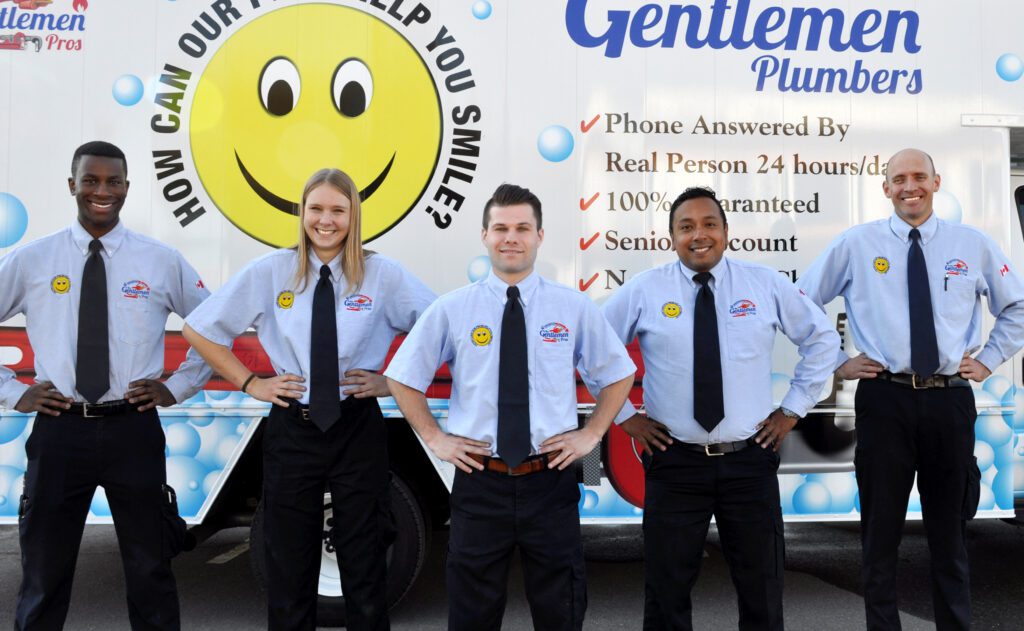We're In Your Neighborhood!

Same Day Service
Since 1992
Call The Gentleman Pros Now!
(780) 809-3219
We're In Your Neighborhood!


Same Day Service
Since 1992
Call The Gentleman Pros Now!
(780) 809-3219

Trenchless pipe replacement is the method to replace the pipe without requiring a complete excavation. Trenchless pipe replacement, also known as trenchless pipe bursting uses a hydraulic head to burst the old pipe while pulling a new pipeline behind it. Trenchless pipe bursting avoids the costs associated with excavating the existing pipe, such as the demolition of decks, fences, driveways, and patios if the pipeline runs beneath.
“Our experience with Gentlemen Pros Plumbing was simply outstanding. Celina, James, and Trevor proved to be an exceptional team, tackling our plumbing issue with skill and efficiency. Facing a challenging situation—a crushed sewer pipe in a relatively new build by a boutique custom home builder—Celina and James approached the problem with determination and efficiency. Their tireless efforts in identifying and assessing the issue were exceptional, and they wasted no time in implementing a solution…” Derrick B
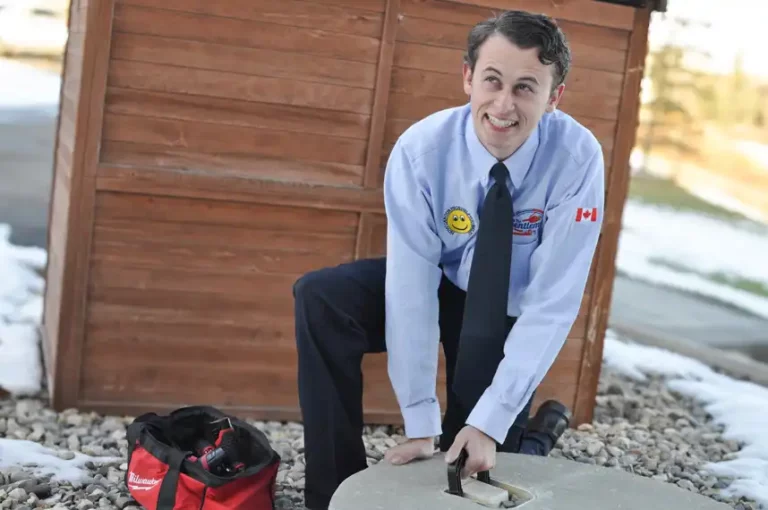

In Calgary, your sewer line is buried deep in the ground. The main sewer line or main drain is the sewer line that connects all the drains in your home to the city’s sewer lines. The main sewer line is larger in diameter than the drain pipes inside your home. Because the main sewer line is buried deep beneath the ground, problems are difficult to detect. We recommend a camera inspection in your main sewer line each year, especially for homes older than 50 years. A camera inspection will identify problems before they become emergencies. (Schedule a sewer line camera inspection before you buy a new home. Be confident there are no problems with the main sewer line before you purchase the home.) Unfortunately, because sewer lines are below ground, most homeowners in Calgary don’t recognize there is a problem with their sewer line until it becomes an emergency.
There are two solutions to fixing up a broken pipe without digging it up, pipe bursting and pipelining.

Trenchless pipe bursting involves bursting the existing pipe with a hydraulic head, while at the same time pulling a new pipe in place. The new pipe is typically made from HDPE, High-density polyethylene. HDPE is estimated to have a 50-year lifespan. Trenchless pipe bursting requires two small excavation points, for the entrance and entry of the pipe bursting equipment and pipe. Pipe bursting can save money because it allows the pipes to be replaced without needing to demolish structures such as a patio, fence, deck, or driveway above the pipeline.
Pipelining is another way to fix pipes without digging. Pipelining is a very different method than pipe bursting. Pipelining is done by blowing a sleeve that is impregnated with epoxy inside the existing sewer pipe. The epoxy is cured in place creating a smooth, leak-free interior wall and adding decades to the life span of the sewer pipe.

Pipelining is a process that does not require excavation. Pipelining involves blowing a sleeve inside the existing main sewer line that is saturated in epoxy resin. The epoxy cures inside the pipe and creates a new pipe wall. The process does not require excavation. In Edmonton, pipelining is best done in warmer months, so the epoxy is cured properly.
Pipelining is not a good solution if the pipe is not holding its round shape, is collapsing, has bellies, or has a misaligned pipe joint.

Trenchless pipe bursting is effective in many situations when the sewer pipes are failing. Pipe bursting pulls a new pipe in place while destroying the old one. There are two small excavation points required.
While pipelining, typically does not require any excavation. If an entry point can be established in the basement, the lining can be blown into the length of the sewer line. The lining is infused with epoxy creating the new liner. Once the lining is cured in place the entry point is sealed off. This method is less invasive than pipe bursting.
Pipelining has more limitations than pipe bursting. Pipelining is not an ideal solution for pipes with a belly or misaligned joints. Pipelining is effective when a pipe is leaking, but not effective for many pipe issues. Pipelining can not fix pipes that are collapsing and do not hold their original shape.
Pipelining does not that the longevity of pipe bursting. New pipelines from the pipe bursting method are projected to last from 50 to 100 years while pipelining is estimated to last 30 to 50 years.

Trenchless pipe bursting avoids the cost and inconvenience of excavating the entire pipe, and the possible need to demolish fences, decks, or anything within the path of the sewer line.
Trenchless pipe bursting is only an option if the sewer pipes are not bellied, or have a slope issue.
A sewer line with a slope issue or a major belly requires excavation and replacement, and cannot be remedied with a trenchless pipe replacement.
Pipe bursting can save money because it removes the cost of excavating your sewer pipes, and the cost to demolish and rebuild anything that lies in that path.
Pipe bursting also saves money because it is a permanent solution, rather than a temporary fix. Ongoing maintenance rather than fixing the problem is costly.
Pipe bursting is typically a one to two-day process that requires about 4 technicians.
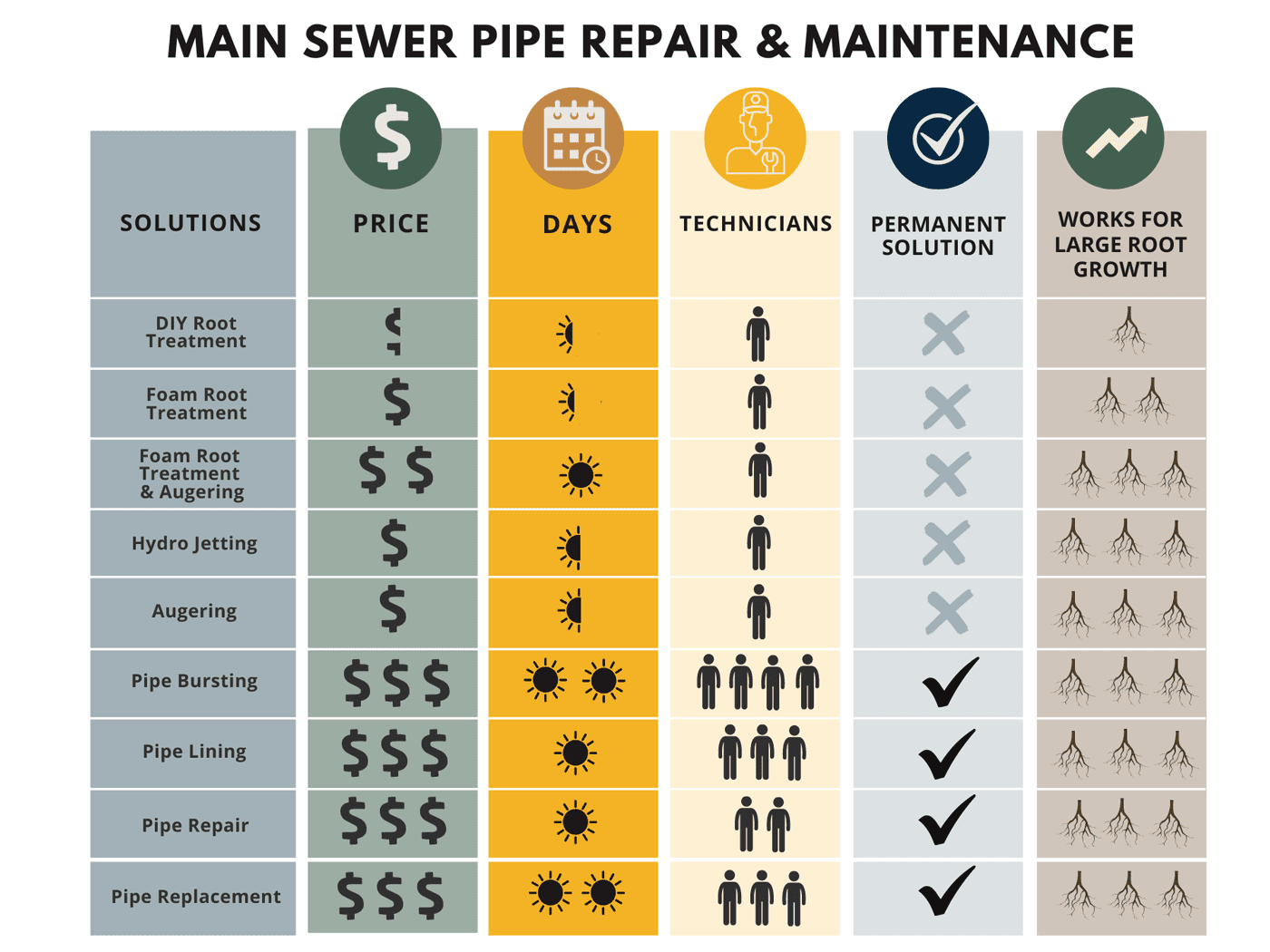
The best time to do a trenchless pipe repair in Calgary is in warm months. Ideally, if you are able to plan ahead, schedule the service in late spring, summer, or late fall.
Most often sewer lines need to be replaced because the sewer line has a belly, cracks, a joint misalignment, or the pipe collapses.
Homes that are older than 50 years are more prone to sewer line problems. After 1970 plastic PVC or ABS pipes were most commonly used. Plastic sewer pipes don’t rust and have a long life span.
Prior to 1970 castiron, cement, clay, and Orangeburg (bituminous fiber) pipes were commonly used.

Castiron pipes rust from the inside out. They are known for causing clogs because the rough or rusted interior catches waste. Over time joint seals breakdown, down and therefore are prone to leaks. Leaky pipes often have roots growing inside. The roots are attracted to wastewater inside the sewer line, providing fertilizer and water.
Homes that are older than 50 years are more prone to sewer line problems. After 1970 plastic PVC or ABS pipes were most commonly used. Plastic sewer pipes don’t rust and have a long life span.
Prior to 1970 castiron, cement, clay, and Orangeburg (bituminous fiber) pipes were commonly used.
Clay sewer pipes were commonly used in Calgary and Alberta for many years. (One of the largest clay pipe manufacturers resided in Calgary 100 years ago.)
Over time as the ground shifts clay pipe cracks and crumbles. Clay pipelines have many joints. As joint seals wear out over time, there are more leaks and consequently more opportunities for roots to grow inside the pipe
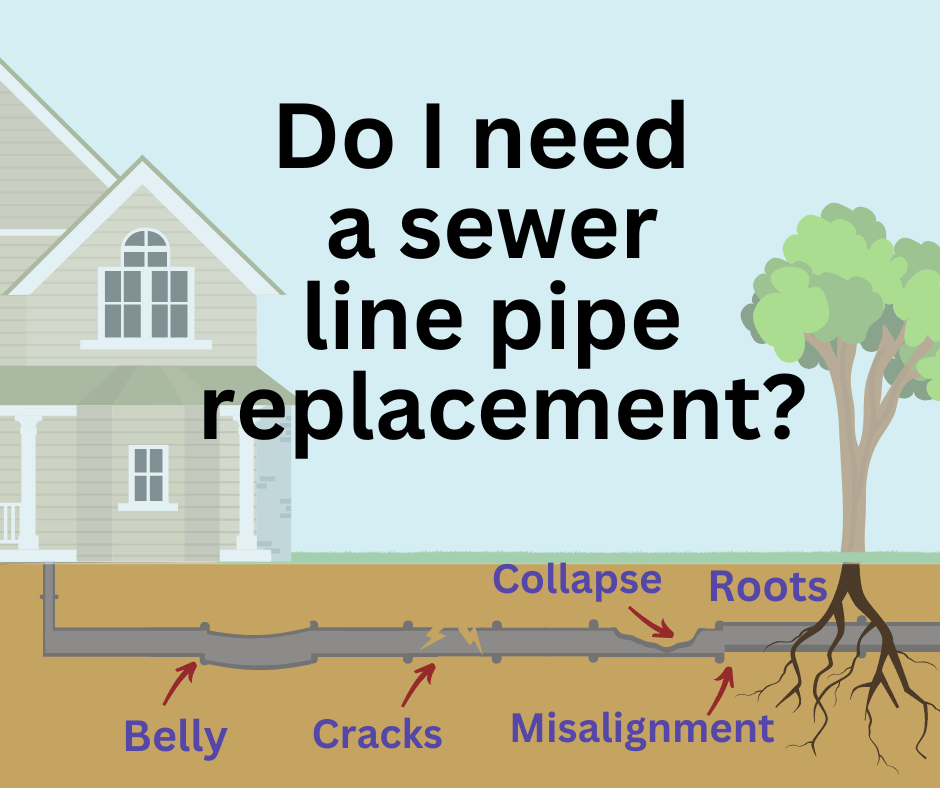
Concrete pipe or asbestos cement pipe was commonly used after World War 2. Like clay pipe, concrete and cement pipes break down over time and crack and crumble as the earth shifts. Joint seals break down over time allowing roots to grow inside the pipe.
Orangeburg pipe, or bituminous fiber pipe, was used in many Canadian cities after World War 2, including Calgary. The pipe is made from wood fibers surrounded by a tar pitch, creating an ideal environment for roots to grow. Initially, Orangeburg pipe was used for telecom wires, but home builders during the baby boom era decided it would be suitable for sewer lines. Orangeburg pipe is known to collapse, belly, tear and break down over time.
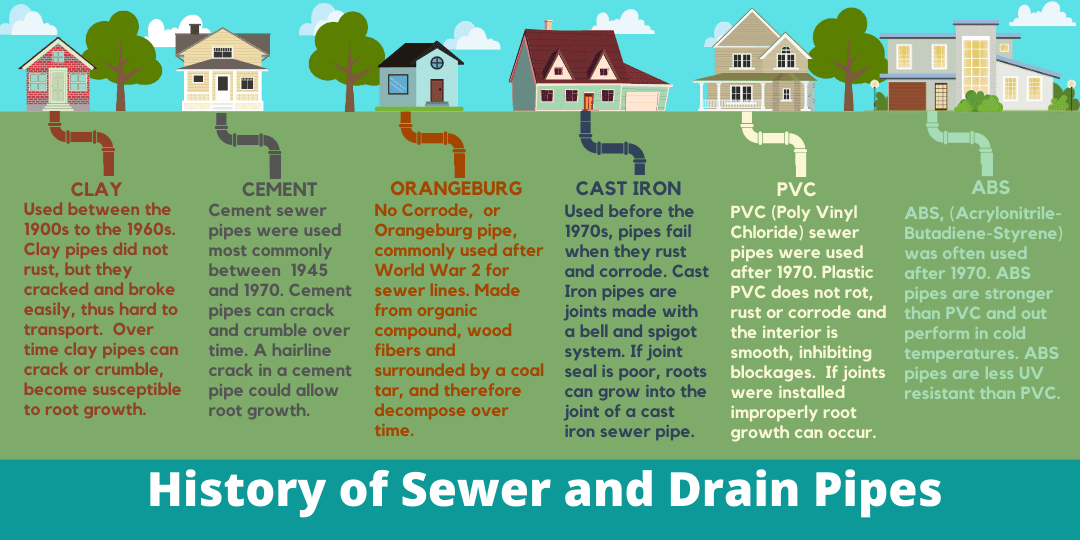
ABS and PVC pipes were used in sewer lines after 1970. They won’t rust and are less prone to clogs because of the smooth plastic interior. They are less likely to crack or crumble when the earth shifts. Pipe bellies can be found in ABS or PVC plastic pipes.
A pipe belly is when the pipe sags because the earth underneath is not supported. Large pipe bellies will sag and over time collect waste building a clog in the pipeline. Although the clogs can be cleaned out with an auger or hydro jet, the only permanent solution is a pipe replacement.



